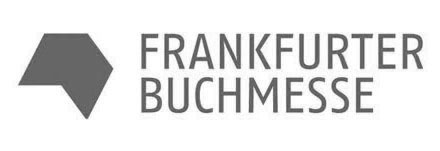Content
Because the year of change is 2004, the depreciation allowance for the equipment for 2004 is determined using recovery year 3 of table 8. Tara Corporation, with a short tax year beginning March 15 and ending December 31, placed in service on March 16 an item of 5-year property with a basis of $1,000. This is the only property the corporation placed https://simple-accounting.org/ in service during the short tax year. The depreciation rate is 40% and Tara applies the half-year convention. If the MACRS property you acquired in the exchange or involuntary conversion is qualified property, discussed earlier in chapter 3 under What Is Qualified Property, you can claim a special depreciation allowance on the carryover basis.
What is the mostly used depreciation method?
Straight Line Depreciation Method
This is the most commonly used method to calculate depreciation. It is also known as fixed instalment method. Under this method, an equal amount is charged for depreciation of every fixed asset in each of the accounting periods.
Report the inclusion amount figured as described in the preceding discussions as other income on the same form or schedule on which you took the deduction for your rental costs. If you have two or more successive leases that are part of the same transaction (or a series of related transactions) for the same or substantially similar property, treat them as one lease. An election to include property in a GAA is made separately by each owner of the property. This means that an election to include property in a GAA must be made by each member of a consolidated group and at the partnership or S corporation level (and not by each partner or shareholder separately). If you dispose of GAA property as a result of a like-kind exchange or involuntary conversion, you must remove from the GAA the property that you transferred.
Comparing depreciation methods
However, if the patent or copyright becomes valueless before the end of its useful life, you can deduct in that year any of its remaining cost or other basis. The above rules do not apply to the holder of a term interest in property https://simple-accounting.org/accelerated-depreciation-definition-example/ acquired by gift, bequest, or inheritance. For tax years beginning in 2023, the maximum section 179 expense deduction is $1,160,000. For tax years beginning in 2022, the maximum section 179 expense deduction is $1,080,000.
The system was introduced in 1986 by the Tax Reform Act and replaced the Accelerated Cost Recovery System (ACRS). Units of production depreciation is a method of calculating depreciation that is based on the actual usage of an asset rather than the time used. This method involves calculating the depreciation expense based on the number of units it produces or the number of hours it is used, which is then divided by the total number of units or hours the asset is expected to produce over its useful life. This method is commonly used for assets that are primarily used for production or manufacturing purposes, such as machinery, equipment, or vehicles.
Evidence on the impact of mandatory changes in accounting principles on corporate loan agreements
You can use either of the following methods to figure the depreciation for years after a short tax year. For more information and special rules, see the Instructions for Form 4562. The DB method provides a larger deduction, so you deduct the $192 figured under the 200% DB method. The DB method provides a larger deduction, so you deduct the $320 figured under the 200% DB method. The DB method provides a larger deduction, so you deduct the $200 figured under the 200% DB method. If you begin to rent a home that was your personal home before 1987, you depreciate it as residential rental property over 27.5 years.
It includes any program designed to cause a computer to perform a desired function. However, a database or similar item is not considered computer software unless it is in the public domain and is incidental to the operation of otherwise qualifying software. You must reduce the basis of property by the depreciation allowed or allowable, whichever is greater. Depreciation allowed is depreciation you actually deducted (from which you received a tax benefit). Depreciation allowable is depreciation you are entitled to deduct.
Cars and other listed property are subject to special rules
Generally, if the property is listed in Table B-1, you use the recovery period shown in that table. However, if the property is specifically listed in Table B-2 under the type of activity in which it is used, you use the recovery period listed under the activity in that table. Use the tables in the order shown below to determine the recovery period of your depreciable property. You are a sole proprietor and calendar year taxpayer who works as a sales representative in a large metropolitan area for a company that manufactures household products. For the first 3 weeks of each month, you occasionally used your own automobile for business travel within the metropolitan area. During these weeks, your business use of the automobile does not follow a consistent pattern.
The use is for your employer’s convenience if it is for a substantial business reason of the employer. The use of listed property during your regular working hours to carry on your employer’s business is generally for the employer’s convenience. Qualified nonpersonal use vehicles are vehicles that by their nature are not likely to be used more than a minimal amount for personal purposes. They include the trucks and vans listed as excepted vehicles under Other Property Used for Transportation next. Deductions for listed property (other than certain leased property) are subject to the following special rules and limits.
Instead of including these amounts in the adjusted basis of the property, you can deduct the costs in the tax year that they are paid. You must treat an improvement made after 1986 to property you placed in service before 1987 as separate depreciable property. Therefore, you can depreciate that improvement as separate property under MACRS if it is the type of property that otherwise qualifies for MACRS depreciation.
The characteristics of the straight line method is that the depreciation expense is constant so the valuation of the company is easier as you know how to adjust it if necessary. The straight line depreciation method takes the purchase or acquisition price, subtracts the salvage value and then divides it by the total estimated life in years. Because this tends to occur at the beginning of the asset’s life, the rationale behind an accelerated method of depreciation is that it appropriately matches how the underlying asset is used. As an asset age, it is not used as heavily, since it is slowly phased out for newer assets. So, the company will record depreciation expense of $7,000 annually over the useful life of the equipment.
The total cost you can deduct each year after you apply the dollar limit is limited to the taxable income from the active conduct of any trade or business during the year. Generally, you are considered to actively conduct a trade or business if you meaningfully participate in the management or operations of the trade or business. Silver Leaf, a retail bakery, traded in two ovens having a total adjusted basis of $680, for a new oven costing $1,320. They received an $800 trade-in allowance for the old ovens and paid $520 in cash for the new oven. This chapter explains what property does and does not qualify for the section 179 deduction, what limits apply to the deduction (including special rules for partnerships and corporations), and how to elect it. You figure your share of the cooperative housing corporation’s depreciation to be $30,000.
When a firm uses an accelerated method of depreciation?
Accelerated depreciation refers to those methods where the asset cost is depreciated faster than the straight-line method. This method's main purpose is to believe that assets are more productive in the early years than in later years.
Although the rate remains constant, the dollar value will decrease over time because the rate is multiplied by a smaller depreciable base each period. The United States Census Bureau (2007) reports that businesses spent an aggregate of approximately $7.5 trillion on capital investments or an average of almost $1.1 trillion per year during the period 1999 through 2005. Given the importance of capital investments to firms, shareholders, and society, efforts to understand the factors that influence managers’ capital investment decisions are of considerable practical importance. Depreciation is a way to account for the reduction of an asset’s value as a result of using the asset over time. Depreciation generally applies to an entity’s owned fixed assets or to its leased right-of-use assets arising from lessee finance leases. Vehicle eligibility is based on a Gross Vehicle Weight Rating (GVWR), which is the maximum allowable weight of a fully loaded vehicle (i.e., weight of vehicle, including vehicle options, passengers, cargo, gas, oil, coolant, etc.).
Sum-of-the-years’-digits depreciation method
On July 2, 2020, you purchased and placed in service residential rental property. You used Table A-6 to figure your MACRS depreciation for this property. If there are no adjustments to the basis of the property other than depreciation, your depreciation deduction for each subsequent year of the recovery period will be as follows. For business property you purchase during the year, the unadjusted basis is its cost minus these and other applicable adjustments. If you trade property, your unadjusted basis in the property received is the cash paid plus the adjusted basis of the property traded minus these adjustments. However, you can make the election on a property-by-property basis for nonresidential real and residential rental property.
- 551 and the regulations under section 263A of the Internal Revenue Code.
- Instead of figuring depreciation for the carryover basis and the excess basis separately, you can elect to treat the old automobile as disposed of and both of the basis components for the new automobile as if placed in service at the time of the trade-in.
- You must also increase the 15-year safe harbor amortization period to a 25-year period for certain intangibles related to benefits arising from the provision, production, or improvement of real property.
- If you have two or more successive leases that are part of the same transaction (or a series of related transactions) for the same or substantially similar property, treat them as one lease.
- The maximum deduction amounts for trucks and vans are shown in the following table.
- Further, pursuant to paragraph (d)(4)(i) of this section, the equipment is not eligible in 2004 for the additional first year depreciation deduction provided by section 168(k) or section 1400L(b).
It cost $39,000 and they elected a section 179 deduction of $24,000. They also made an election under section 168(k)(7) not to deduct the special depreciation allowance for 7-year property placed in service in 2021. Their unadjusted basis after the section 179 deduction was $15,000 ($39,000 – $24,000). They figured their MACRS depreciation deduction using the percentage tables.
Найкращий лайк — це 30 гривень))
Фондуючи незалежну редакцію Читомо, ви допомагаєте зростити нове покоління професіоналів видавничої справи і збільшуєте кількість хороших книжок у світі.
Спасибі.

|

















Щоб залишити свій коментар, будь ласка, увійдіть через аккаунт Vkontakte чи Facebook